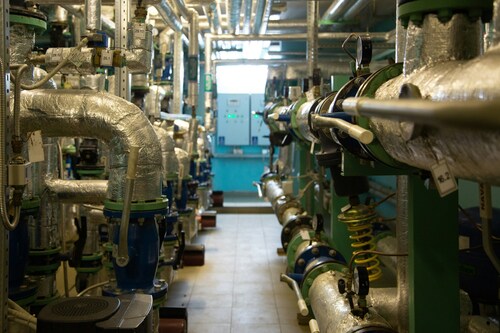
Managing energy consumption is crucial for large facilities like factories, office buildings, or industrial plants. With rising utility costs, environmental concerns, and stricter regulations, energy efficiency has never been more important. For organizations, it’s a key strategy to cut costs and reduce their carbon footprint.
Key Areas of Energy Consumption in Commercial Facilities
To effectively address energy use, businesses first need to identify the major systems that drive consumption. Here are the main culprits:
1. HVAC Systems
Heating, ventilation, and air conditioning (HVAC) systems are one of the largest energy consumers in any commercial facility. They account for 40-60% of total energy use in many buildings. Inefficiencies often stem from outdated equipment, poor maintenance, or improper system design. Optimizing HVAC performance with modern solutions like high-efficiency units or variable speed drives can make a noticeable impact on energy savings.
2. Lighting
Lighting is another significant contributor to energy consumption, especially in facilities like warehouses, shopping centers, and office buildings. Switching to LED lighting, which uses 75% less energy than traditional bulbs and lasts much longer, is a low-cost way to reduce energy use immediately.
3. Refrigeration Systems
For industries like food storage, pharmaceuticals, and manufacturing, refrigeration systems are vital yet energy-intensive. Collaboration with industrial ammonia refrigeration contractors is often a key step in ensuring refrigeration systems operate efficiently while adhering to safety standards.
4. Building Management Systems (BMS)
A BMS integrates and controls heating, cooling, ventilation, lighting, and other electrical systems within a facility. While essential for operation, outdated systems often fail to optimize energy usage effectively. Upgrading to smart systems that can automatically adjust settings based on occupancy and usage data is crucial.
Implementing Efficient Technologies
Once businesses identify where their energy is being consumed, the next step is to implement the right technologies.
1. System Upgrades
Outdated systems and equipment tend to be highly inefficient. Upgrading to energy-efficient equipment, such as high-efficiency HVAC units, modern boilers, and ENERGY STAR®-rated appliances, can drastically cut energy use. Though it may require a significant upfront investment, the ROI often comes in the form of lower utility bills and fewer maintenance costs.
2. Smart Controls and Automation
Building automation systems (BAS) and smart controls allow businesses to monitor and adjust operations based on real-time data. For example:
- Smart thermostats automatically adjust temperatures depending on occupancy.
- Motion-sensor lighting ensures lights turn off when rooms are vacant.
- Advanced refrigeration controls optimize cooling cycles to save energy.
Automation not only saves energy but also reduces human error in managing building systems.
3. Renewable Energy Integration
Adopting renewable energy solutions like solar panels, wind turbines, or geothermal systems can dramatically reduce dependency on non-renewable energy sources. For instance, office parks and schools often install solar panels to power lighting and HVAC systems during daylight hours. Pairing renewable systems with battery storage can ensure energy availability even during peak demand.
The Role of Data Monitoring and Analysis
Energy-efficient technologies, while powerful, need complementary data monitoring to reach their full potential. Without data-driven insights, facilities might struggle to identify inefficiencies or optimize their systems.
Why Data Monitoring Matters
Energy management systems that track usage trends in real-time allow businesses to:
- Identify inefficiencies in specific systems or areas.
- Benchmark energy performance across different facilities.
- Implement corrective action based on historical patterns and projections.
Why Energy Efficiency is a Worthwhile Investment
Investing in energy efficiency in large commercial facilities is not just a cost-saving measure. It’s a holistic approach that:
- Reduces Operating Costs: Energy-efficient equipment and systems can lower utility bills and maintenance costs over time.
- Minimizes Carbon Footprint: By consuming less energy and relying less on non-renewable resources, businesses contribute to environmental sustainability.
- Enhances Brand Value: Companies recognized for sustainability often enjoy better reputations and customer loyalty.
- Futureproof Operations: Energy-efficient systems and technologies position businesses to meet future regulations and adapt to market demands.
Conclusion
Large commercial facilities that prioritize energy efficiency stand to gain significant financial, operational, and environmental benefits. By addressing key energy-consuming systems, adopting modern technologies, and leveraging data insights, businesses can unlock new levels of productivity and sustainability.



